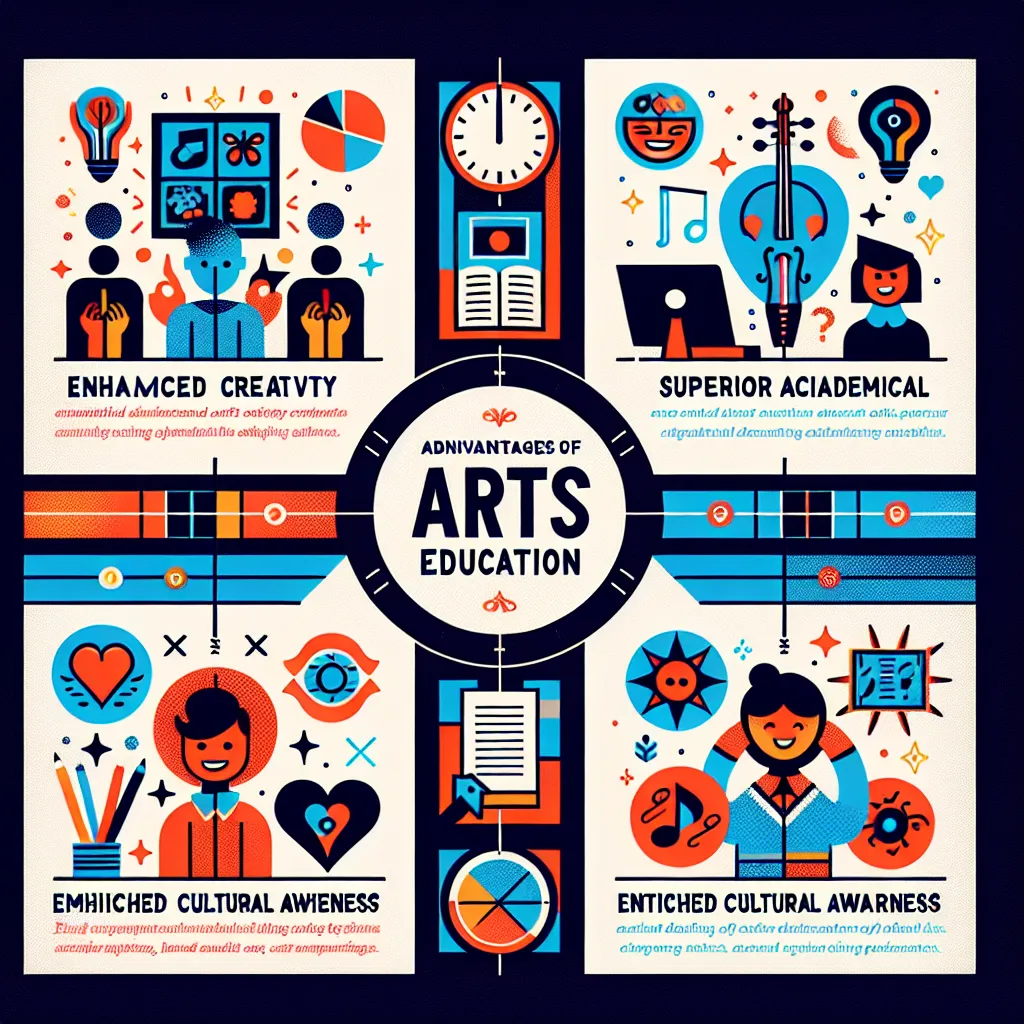The IELTS Reading section is a crucial component of the test, assessing candidates’ ability to understand complex texts and extract relevant information. Today, we’ll focus on a topic that has been gaining prominence in recent years: “The role of art and music in education.” This subject has appeared in various forms in past IELTS exams and continues to be relevant due to ongoing debates about the importance of arts education in schools.
Based on current trends and the frequency of arts-related topics in past exams, it’s highly likely that you may encounter a similar passage in your upcoming IELTS test. Let’s dive into a practice exercise to help you prepare for this possibility.
Practice Reading Passage
The Transformative Power of Arts Education
A. In recent years, there has been a growing recognition of the vital role that art and music play in education. While traditionally viewed as extracurricular activities, these subjects are now being acknowledged for their potential to enhance overall academic performance and foster essential life skills. This shift in perspective is backed by numerous studies that highlight the cognitive, emotional, and social benefits of integrating arts education into the core curriculum.
B. One of the primary advantages of arts education is its ability to stimulate creativity and critical thinking. When students engage in artistic activities, they are encouraged to think outside the box, experiment with different ideas, and develop innovative solutions to problems. This creative mindset is not only valuable in artistic pursuits but also translates to other academic areas and real-world situations. For instance, a study conducted by the University of California found that students who participated in music programs demonstrated enhanced problem-solving skills and showed improved performance in mathematics.
C. Moreover, arts education plays a crucial role in emotional development and self-expression. Through various art forms, students can explore and communicate complex emotions, leading to improved self-awareness and emotional intelligence. This emotional literacy is particularly important in today’s fast-paced, technology-driven world, where face-to-face interactions are becoming less frequent. The ability to understand and express emotions effectively can lead to better relationships, improved mental health, and greater overall well-being.
D. Another significant benefit of arts education is its potential to foster cultural awareness and empathy. By studying diverse art forms from different cultures and historical periods, students gain a broader perspective of the world and develop a deeper understanding of various cultural contexts. This exposure to diversity can help break down cultural barriers, promote tolerance, and prepare students for an increasingly globalized society. Furthermore, participating in collaborative artistic projects can enhance teamwork skills and teach students the value of different perspectives and ideas.
E. The impact of arts education extends beyond personal development to academic performance. Contrary to the misconception that time spent on arts detracts from core subjects, research has shown that students who participate in arts programs often perform better academically. A longitudinal study by the National Endowment for the Arts found that students with high levels of arts engagement were more likely to achieve higher grades, graduate from high school, and pursue higher education compared to their peers with less arts involvement.
F. Despite these evident benefits, arts education often faces challenges in terms of funding and prioritization within school curricula. Many schools, under pressure to improve standardized test scores, have reduced or eliminated arts programs. This approach, however, may be counterproductive. Arts integration has been shown to enhance engagement and motivation across all subjects, leading to improved overall academic performance. For example, using music to teach mathematical concepts or incorporating visual arts into history lessons can make learning more interactive and memorable.
G. The role of technology in arts education is also evolving. Digital tools and platforms are opening up new avenues for artistic expression and collaboration. Students can now create digital art, compose music using software, and share their work globally through online platforms. This intersection of arts and technology is preparing students for future careers in creative industries, which are becoming increasingly important in the digital age.
H. In conclusion, the role of art and music in education extends far beyond mere entertainment or hobby. These subjects are essential components of a well-rounded education, contributing to cognitive development, emotional growth, cultural awareness, and academic success. As educators and policymakers continue to recognize the transformative power of arts education, it is crucial to ensure that all students have access to quality arts programs. By nurturing creativity, fostering empathy, and developing critical thinking skills through arts education, we are not only enriching individual lives but also cultivating a generation of innovative, empathetic, and culturally aware citizens ready to face the challenges of the future.
 Benefits of arts education
Benefits of arts education
Questions
True/False/Not Given
Do the following statements agree with the information given in the reading passage? Write
TRUE if the statement agrees with the information
FALSE if the statement contradicts the information
NOT GIVEN if there is no information on this
- Arts education is now considered as important as traditional academic subjects.
- Participation in music programs has been linked to improved mathematical performance.
- All schools have increased funding for arts programs in recent years.
- Students with high levels of arts engagement are more likely to pursue higher education.
- Digital tools have made arts education less relevant in the modern classroom.
Multiple Choice
Choose the correct letter, A, B, C, or D.
-
According to the passage, one of the primary advantages of arts education is:
A) Improving standardized test scores
B) Increasing school funding
C) Stimulating creativity and critical thinking
D) Reducing stress in students -
The passage suggests that arts education can help students:
A) Avoid emotional challenges
B) Improve emotional intelligence
C) Ignore cultural differences
D) Focus solely on academic subjects -
The study by the National Endowment for the Arts found that students with high arts engagement:
A) Were less likely to graduate from high school
B) Showed no difference in academic performance
C) Were more likely to achieve higher grades
D) Performed worse in standardized tests
Matching Headings
Match the following headings to the correct paragraphs in the passage. Write the correct letter, A-I, next to numbers 9-13.
A) The challenge of funding arts education
B) Arts education and cultural awareness
C) The evolving role of technology in arts education
D) The misconception about arts education and academic performance
E) The importance of arts in emotional development
F) Arts education: A shift in perspective
G) The future of arts education
H) Arts integration across the curriculum
I) The cognitive benefits of arts education
- Paragraph A
- Paragraph C
- Paragraph D
- Paragraph F
- Paragraph G
Short Answer Questions
Answer the following questions using NO MORE THAN THREE WORDS from the passage for each answer.
- What type of skills does engaging in artistic activities encourage students to develop?
- According to the passage, what can the study of diverse art forms help break down?
- What does arts integration enhance across all subjects, leading to improved overall academic performance?
Answer Key and Explanations
-
NOT GIVEN – The passage states that arts education is being recognized for its importance, but it doesn’t explicitly say it’s considered as important as traditional subjects.
-
TRUE – Paragraph B mentions a study by the University of California that found students in music programs showed improved performance in mathematics.
-
FALSE – Paragraph F states that many schools have reduced or eliminated arts programs due to budget constraints.
-
TRUE – Paragraph E cites a study showing students with high arts engagement were more likely to pursue higher education.
-
FALSE – Paragraph G discusses how digital tools are opening up new avenues for artistic expression, making arts education more relevant.
-
C – Paragraph B explicitly states that stimulating creativity and critical thinking is a primary advantage of arts education.
-
B – Paragraph C discusses how arts education improves emotional intelligence and self-awareness.
-
C – Paragraph E mentions that the study found students with high arts engagement were more likely to achieve higher grades.
-
F – Paragraph A introduces the shift in perspective regarding arts education.
-
E – Paragraph C focuses on the role of arts in emotional development and self-expression.
-
B – Paragraph D discusses how arts education fosters cultural awareness and empathy.
-
H – Paragraph F talks about integrating arts across the curriculum to enhance learning in other subjects.
-
C – Paragraph G discusses the evolving role of technology in arts education.
-
innovative solutions – Paragraph B states that students are encouraged to “develop innovative solutions to problems.”
-
cultural barriers – Paragraph D mentions that exposure to diverse art forms can “help break down cultural barriers.”
-
engagement and motivation – Paragraph F states that “Arts integration has been shown to enhance engagement and motivation across all subjects.”
Common Mistakes to Avoid
-
Overgeneralizing: Be careful not to assume information that isn’t explicitly stated in the text. For example, while the passage discusses the benefits of arts education, it doesn’t claim that all schools have increased funding for arts programs.
-
Misinterpreting negative statements: Pay attention to negative phrases. For instance, the passage mentions that many schools have reduced arts programs, not increased them.
-
Confusing similar ideas: The passage discusses both academic performance and standardized test scores. Be sure to differentiate between these concepts when answering questions.
-
Overlooking specific details: In questions asking for short answers, make sure to use the exact words from the passage. For example, “innovative solutions” is the precise phrase used in the text.
-
Mismatching headings: When matching headings to paragraphs, ensure that you understand the main idea of each paragraph and don’t get distracted by minor details.
Vocabulary
- Extracurricular (adjective) – /ˌekstrəkəˈrɪkjʊlər/ – Additional activities not part of the regular school curriculum
- Cognitive (adjective) – /ˈkɒɡnɪtɪv/ – Related to the mental processes of perception, memory, judgment, and reasoning
- Innovative (adjective) – /ˈɪnəveɪtɪv/ – Featuring new methods; advanced and original
- Empathy (noun) – /ˈempəθi/ – The ability to understand and share the feelings of another
- Longitudinal (adjective) – /ˌlɒndʒɪˈtjuːdɪnl/ – Involving the repeated observation of the same variables over long periods of time
- Counterproductive (adjective) – /ˌkaʊntəprəˈdʌktɪv/ – Having the opposite of the desired effect
- Integration (noun) – /ˌɪntɪˈɡreɪʃn/ – The action or process of combining two or more things in an effective way
Grammar Focus
Complex Sentences with Subordinate Clauses:
Example from the text: “While traditionally viewed as extracurricular activities, these subjects are now being acknowledged for their potential to enhance overall academic performance and foster essential life skills.”
Structure: This sentence uses a subordinate clause (While traditionally viewed as extracurricular activities) to provide additional information about the main clause.
Practice: Create your own complex sentences using subordinate clauses to discuss the benefits of arts education. For example:
“Although some schools have reduced funding for arts programs, research shows that arts education can significantly improve students’ overall academic performance.”
Tips for IELTS Reading Success
-
Time management: Practice with timed exercises to improve your speed and efficiency.
-
Skim and scan: Quickly skim the passage for main ideas, then scan for specific details when answering questions.
-
Pay attention to paragraph structure: Understanding the main idea of each paragraph can help with matching headings and answering general questions.
-
Use context clues: If you encounter unfamiliar vocabulary, try to deduce the meaning from the surrounding context.
-
Don’t rely on prior knowledge: Base your answers solely on the information provided in the passage.
-
Practice regularly: Consistent practice with various question types and topics will improve your skills and confidence.
Remember, success in IELTS Reading comes with practice and familiarity with different question types. Keep working on your reading skills, and you’ll see improvement over time. Good luck with your IELTS preparation!
For more IELTS practice materials and tips, check out our other resources:
- The Importance of Arts Education in Schools
- The Role of Public Libraries in Communities
- Impacts of Digital Technology on the Arts
These articles provide additional context and practice opportunities related to arts, education, and community resources, which can further enhance your understanding of these topics for the IELTS exam.


